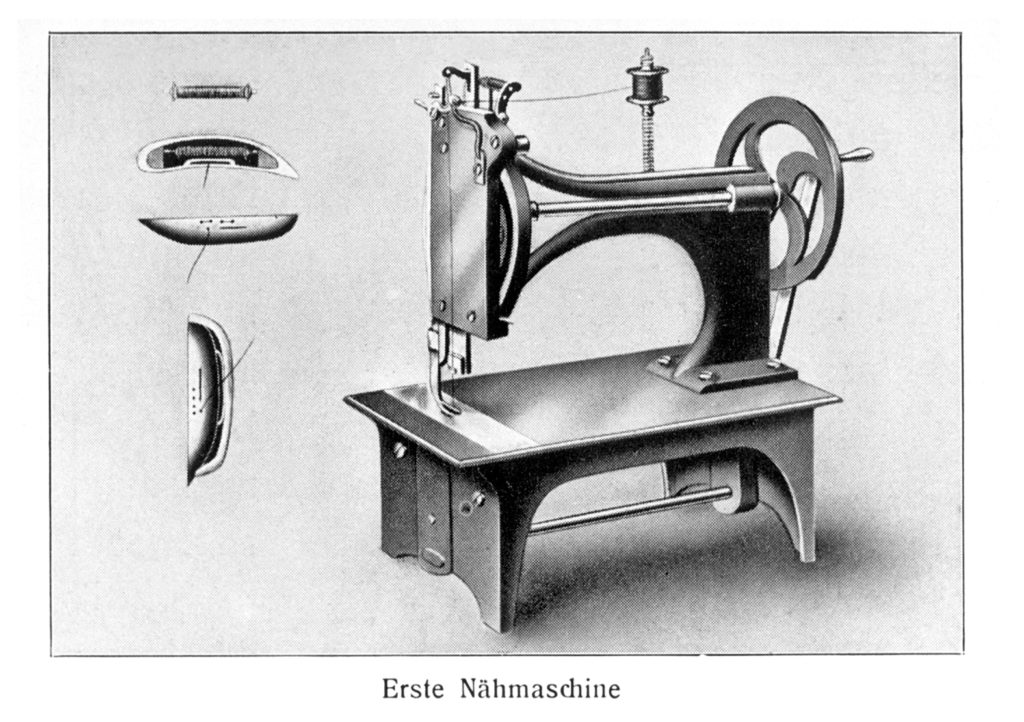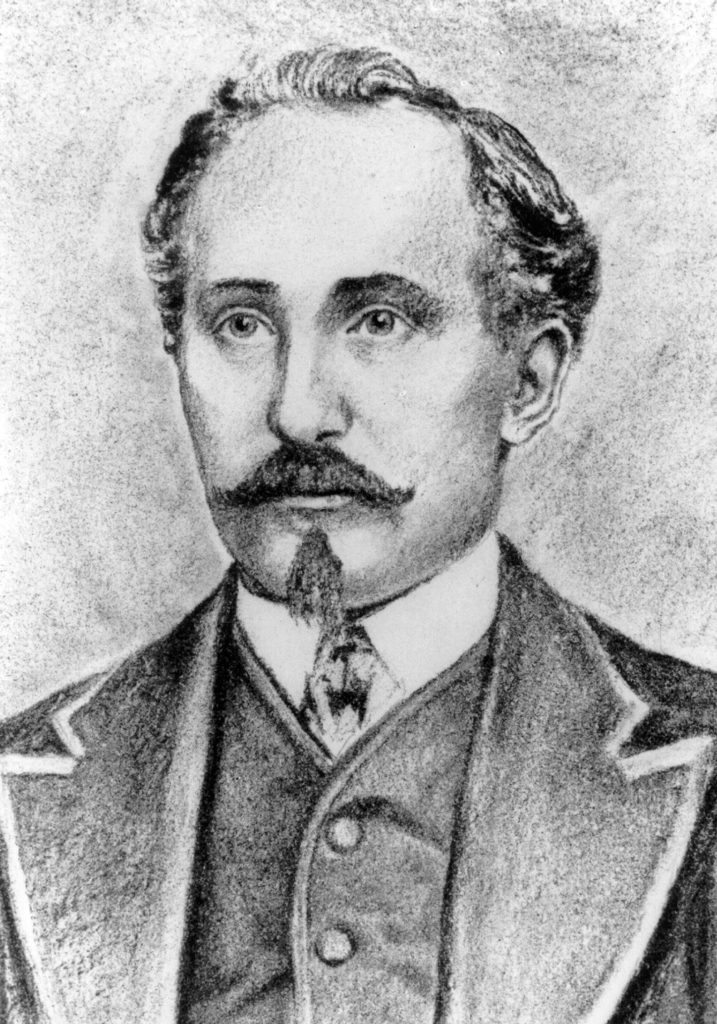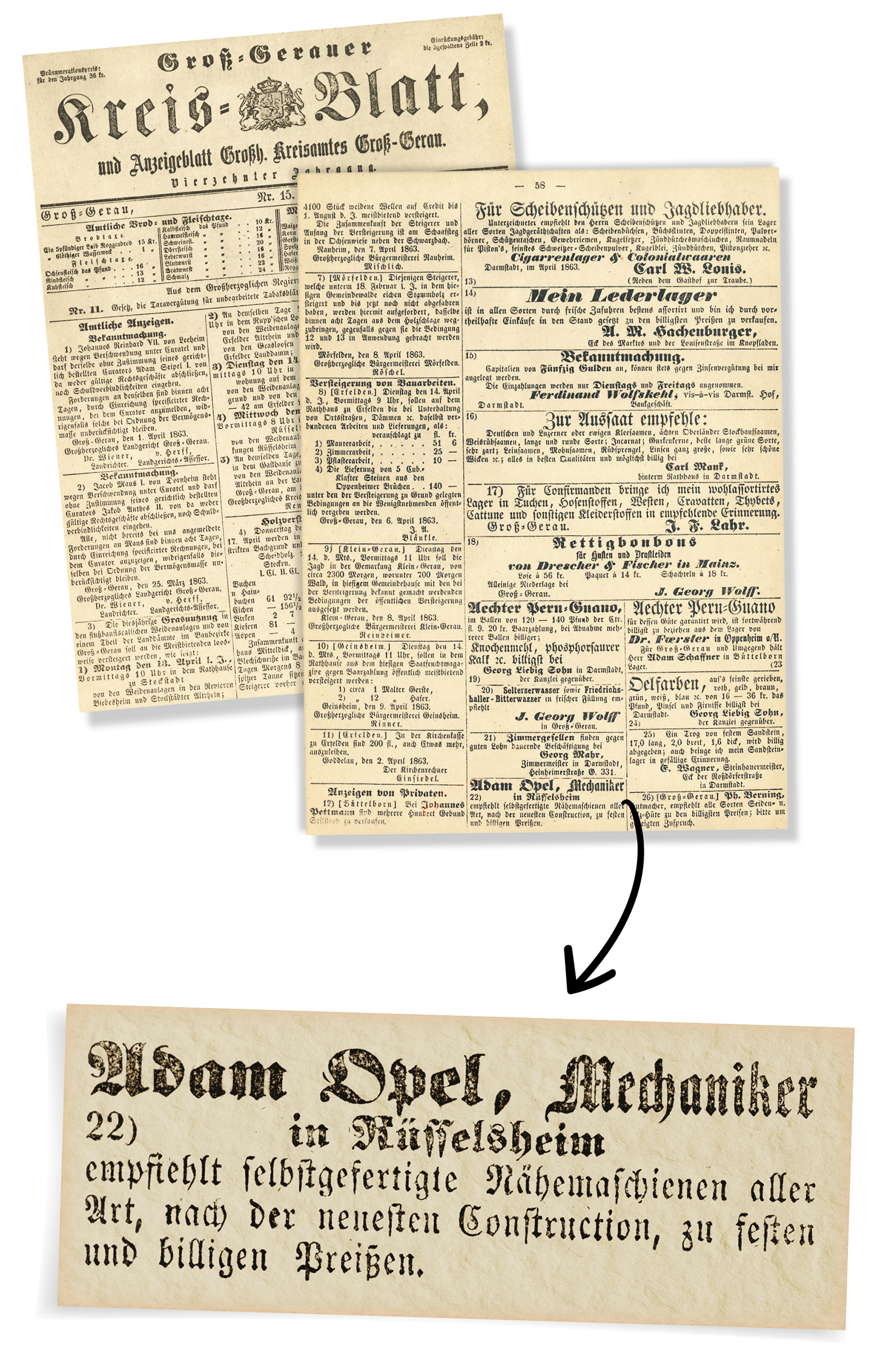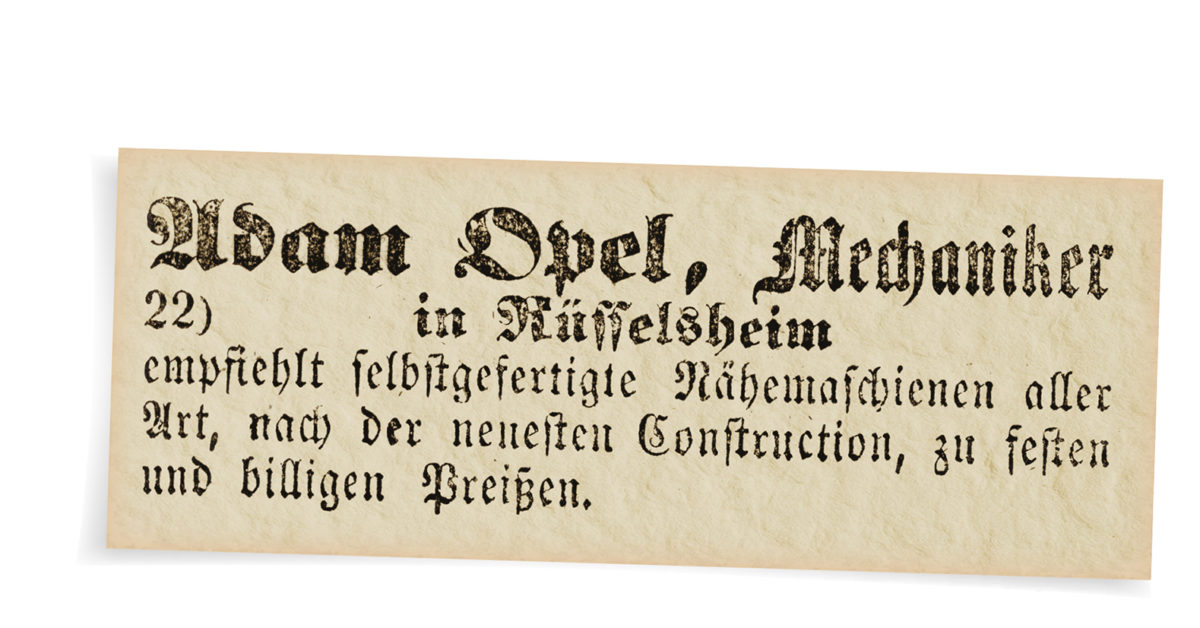“Adam Opel, mechanic in Rüsselsheim, recommends self-made sewing machines of all kinds, according to the latest construction, at fixed and cheap prices”. This was written 160 years ago in the “Groß-Gerauer Kreisblatt”, on 10 April 1863, a Friday. The 25-year-old entrepreneur, who advertised his “sewing machines” here for the first time, had moved into his new workshop that his mother’s brother had made available to him only a few days before. Tools and a little raw material were included, and the uncle also granted his nephew a small loan. Now his business was to really take off. The young entrepreneur drew public attention to himself and his work for the first time with the advertisement.
Simple but effective
150 characters, 19 words, five lines – by today’s standards, this first Opel advertisement is very plain. And yet such advertisements were probably the most important advertising medium at the time; according to estimates, the largest part of the advertising budgets of the time went into this type of text ad. Graphic and image-heavy poster advertising was still in its infancy. Only a few years earlier, at Christmas 1854, Ernst Litfass had erected the first advertising pillar in Berlin. The pillars with illustrated advertisements named after him had so far only spread in large cities.


For his first public appearance as a sewing machine mechanic, Adam Opel relied on the “Groß-Gerauer Kreisblatt und Anzeigenblatt des Großherzoglichen Kreisamtes”, which had been founded five years earlier. The advertisement can be found at the bottom of page 58. In the advertisements above, a carpenter is looking for journeymen willing to work, guano fertiliser from Peru and mineral water are offered. The production and sales figures of Adam Opel’s sewing machine factory skyrocketed after that. The advertisement probably played its part in this.
Even back then: innovations for all
One thing is certain: Adam Opel’s offer gave many people the opportunity to afford a sewing machine in the first place. They were particularly sought after by women, who were able to do paid work from home for the first time thanks to the sewing machine. Adam Opel charged 160 thalers for his design, while a customer had to pay 250 thalers for competing products from America. In this respect, the Opel company was to remain true to itself: The principle of making innovations accessible to everyone as far as possible still applies.

And today, 160 years after the publication of that first advertisement, Opel is in the midst of a brand profiling and major electrification offensive. The manufacturer already has twelve electrified models on offer – from the Rocks Electric, Corsa-e, Mokka Electric and Astra Hybrid to the Movano-e. By 2024, the entire portfolio will be electrified. And from 2028, Opel will offer exclusively electric vehicles in Europe.
Today: Positioning on all channels
For a further boost in the emotionalisation of the brands, the Rüsselsheim-based manufacturer has been relying on a partnership with the advertising agency Jung von Matt HAVEL since the beginning of 2023. The cooperation covers all issues of strategic brand positioning and campaign development on all marketing channels and in all markets for Opel and the British brand Vauxhall – the company has come a long way since the 150-character advertisement anno 1863.
April 2023
